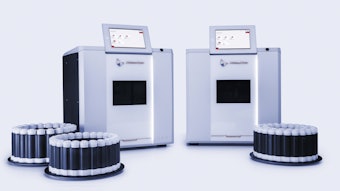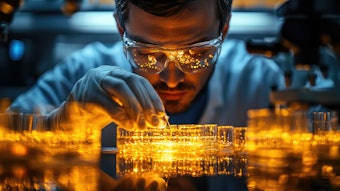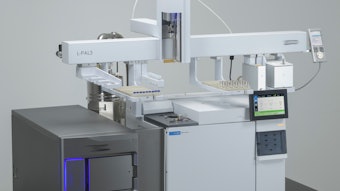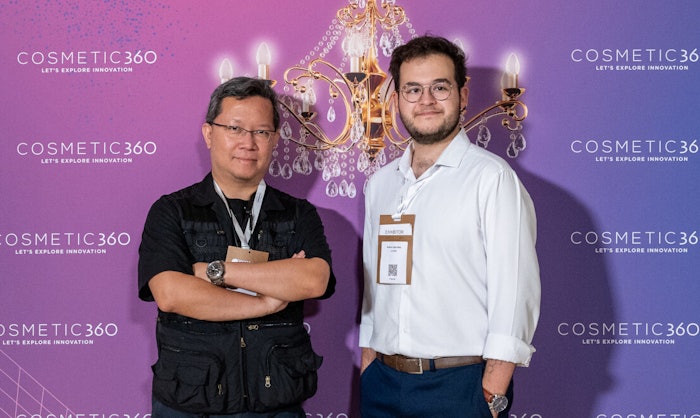
In the beauty industry, the demand for measurable, science-backed results has never been greater. Consumers expect products to deliver on their claims — and brands are under increasing pressure to validate these claims with reliable data.
This article is only available to registered users.
Log In to View the Full Article
In the beauty industry, the demand for measurable, science-backed results has never been greater. Consumers expect products to deliver on their claims — and brands are under increasing pressure to validate these claims with reliable data.
This is where Loretta, a France-based start-up founded in 2024 upon the discovery of high-speed dermal atomic force microscopy (AFM), is making waves. By combining cutting-edge nanoscale imaging with advanced AI analysis, the company is redefining how cosmetic products are tested and proven effective.
The company was named winner of the 2025 Cosmetic Victories competition in the industrial category. Here, Maël Peron, chief operating officer at Loretta, describes the technology, its application and development.
Nanoscale 3D Mapping: Single Cell Topography
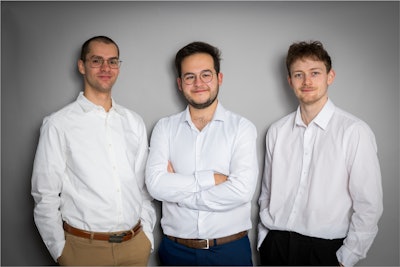 (from L): Maël Peron, chief operating officer, Arthur Dervillez, Ph.D., chief executive officer, and Tim Berthelet, chief sales officer, all of Loretta
(from L): Maël Peron, chief operating officer, Arthur Dervillez, Ph.D., chief executive officer, and Tim Berthelet, chief sales officer, all of Loretta
Loretta’s team uses an enhanced, miniaturized and accelerated atomic force microscope to perform skin analysis. "Atomic force microscopy (AFM) is a method of imagery that does not focus on light and sight, but rather on contact and touch," explains Peron. "Basically, an extremely small needle will glide on top of the sample, collecting topographic data in order to create a nanoscale 3D map of a single cell."
The company's focus is on corneocytes, so researchers use D-Squame tape to collect dead skin cells. These are placed into the machine and the images are extracted in a non-destructive fashion. From this information, internally developed AI is used to extract complex data related to skin health and texture to create 3D maps.
"Thanks to this data, we are currently developing a Digital Skin Twin that would allow for enhanced prediction of the effects of cosmetic products as well as better understanding of the inner workings of corneocytes," Peron says.
Speeding AFM to Uncover Product Efficacy Insights
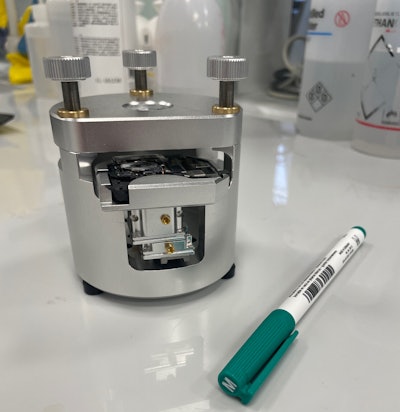 Loretta uses an enhanced, miniaturized and accelerated atomic force microscope to perform skin analysis.
Loretta uses an enhanced, miniaturized and accelerated atomic force microscope to perform skin analysis.
AFMs are not widely used in the cosmetic world because, according to Peron, they are slow, impractical and complex to use. "Our technology allows us to produce an image in under five seconds, while regular AFMs usually need about an hour."
He continues, "With a minimum of ten images per sample, the difference is staggering — and that is not even taking the analysis into account, which is [traditionally] ... time-consuming and requires high levels of expertise. ...[This] shows how valuable our AI is."
Loretta reportedly is the only company that provides AFM analysis services to cosmetic labs developing new formulas. "[O]ur structural method provides unique parameters describing the state of the corneocyte that will help [labs] evaluate the efficacy of their product with a brand new nanoscale vision — from research studies to final product comparison."
According to Peron, Loretta's tech, along with the Digital Skin Twin under development, could greatly help with cosmetics product development:
- it is non-invasive,
- it provides easy sampling and
- it affords a long conservation period.
"Our method can allow for in-depth analysis of test subjects’ skin," he continues. "[And b]eing a topographic method, AFM works on all skin tones, even the darkest, as well as tattooed or deeply inflamed skin, so that developing products targeted for an extremely varied clientele becomes a lot easier and a lot more precise."
Intersection of Human Health x Beauty
The technology originates with Edwin Hwu, Ph.D., who according to Peron, patented the high-speed dermal atomic force microscope. Hwu was said to be well-versed in precision imaging tools development and what he called “hardware hacking” in general. When his research department at Denmark’s Technical University merged with the Health Tech department, Hwu explored how he could apply his skills to human health.
He then met Arthur Dervillez, a Ph.D. student in biophysics, who took notice of the technology and recognized its potential. "[B]eing French, [Dervillez] immediately thought of the cosmetics industry when seeing the precision with which Dr. Hwu managed to analyze the skin," said Peron.
Soon after, Dervillez became CEO of the newly formed Loretta project, working with cosmetics companies to provide "the most accurate and quantitative data," as well as helping with research on dermatological health using AFM.
Blu-raya Inspiration: Overcoming Technical Development Challenges
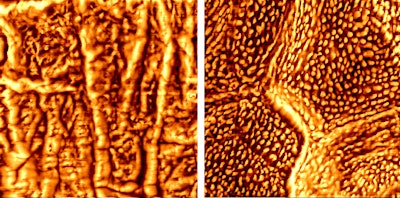 (from L) Examples of healthy skin and atopic dermatitis imaging under AFM
(from L) Examples of healthy skin and atopic dermatitis imaging under AFM
Creating a faster and smaller version of an atomic force microscope was not an easy task. "AFMs are high-precision tools, very sensitive to the finest of vibrations," Peron explains. "One such challenge was with the cantilever, which is the very small tip that scans the sample. It is a very fragile piece, which is why AFM is usually so slow.
"Recording the tip’s very small movements at such high speed was also a great challenge," he continues. "Dr. Hwu overcame these issues [with inspiration from] other technologies, such as Blu-raya lasers that are very good at recording lots of data in a very short time."
Peron adds that another challenge was developing the AI to analyze the images since very few studies on skin nanotexture were available. "Dr. Hwu’s team had to analyze hundreds of images manually to create a usable dataset." The AI itself was developed by Jen-Hung Wang, a Ph.D., student specialized in computer vision and bio-engineering.
"Indeed, hardware and software are two very different domains, so creating the technologies we use at Loretta required a diverse team with varied skillsets," Peron adds.
Raising the Credibility of a Game-changing Tech
In terms of the impact of winning the Cosmetic Victories industrial category, Peron says Loretta is already feeling the effects.
"Our company was created in late 2024, and even though we had very strong scientific credentials, we were still young and poorly known. Winning this competition proved that our project showed promise and that our technology was a true game-changer."
Peron believes that winning this competition will continue to enhance the company's credibility and will allow more and more people and companies to discover this new and unique method of analysis.
"The more [that] AFM imagery for cosmetics clinical trials is recognized, the more we can help with the development of effective, inclusive and eco-friendly products," Perons notes.
"With enough time and enough data, we will be able to finalize our Digital Skin Twin, which will provide even more information to our customers, but also enhance the possibilities for prediction of the effects of new products," he concludes.
Footnotes
a Blu-ray is a registered trademark of the Blu-ray Disc Association.




